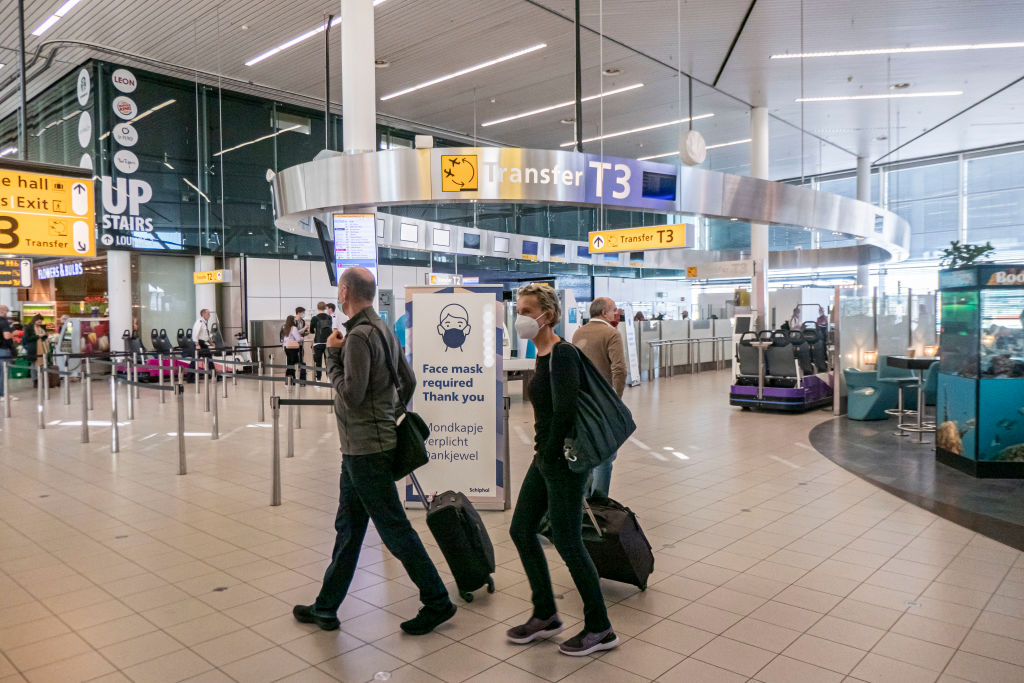
With COVID-19 spreading as widely as it is right now, you run the risk of meeting an infected person every time you go into a public place. But every trip to the pharmacy or meal in a restaurant doesn’t lead to a case of COVID-19. So what makes some exposures more harmful than others?
The length of time you spend around a person with COVID-19 seems to heavily influence your likelihood of getting sick, according to a recent Nature study that has been peer-reviewed but not fully edited. Most exposures that result in transmission last at least an hour, if not much longer, the researchers say.
Previous studies have shown that people who spend long bouts of time with someone who has COVID-19 are at increased risk of getting infected, particularly if the encounter happens in a small, enclosed space. The U.S. Centers for Disease Control and Prevention also warns that longer COVID-19 exposures are riskier than shorter ones—but the agency has typically said 15 minutes of exposure is the threshold after which there’s a meaningful chance of getting sick. The new study, however, suggests it usually takes even longer for the virus to spread.
The researchers analyzed data from a COVID-19 tracking app that millions of people in England and Wales used to report positive test results and get notifications if they came into contact with someone who tested positive. The authors used data from 7 million of those notifications, which all happened from April 2021 to February 2022, to assess which exposures led to additional infections.
More From TIME
There are some limitations to this approach. Data collection ended shortly after the peak of the first Omicron wave, so none of the newer variants, which have continued to evolve for increased contagiousness, are reflected. It’s also possible that some people who got infected after an exposure either did not get tested or did not report their test results in the app, and are therefore not included in the data.
It’s an imperfect measure. Nonetheless, users reported 240,000 positive test results following the 7 million exposure notifications. In around 80% of these cases, the person who tested positive had previously been around someone with COVID-19 for an hour or longer, says co-author Christophe Fraser, a professor of infectious disease epidemiology at the University of Oxford’s Pandemic Sciences Institute (PSI). Transmission was particularly likely within households, where people tend to spend long stretches of time together. These encounters were responsible for 41% of recorded transmissions, according to the study.
“That doesn’t mean some people haven’t been infected during short exposures,” Fraser says, but these incidents were relatively rare in the study group.
Co-author Luca Ferretti, a fellow at PSI who researches the behavior of viruses, says the study suggests you have about a 2% chance of getting infected if you spend an hour with someone who has COVID-19, with the risk continuing to accumulate the longer you spend together.
That’s a much more optimistic conclusion than other scientists have reached. In one modeling study published in 2021, researchers calculated that, in a worst-case scenario, chances of infection could rise as high as 90% during just a few minutes of conversation with a sick, unmasked person. (If either or both people wore a mask, the researchers found, that number fell significantly.) Another modeling study, this one published in 2023, found that someone could inhale an infectious amount of virus after six to 37 minutes in a room with someone who has COVID-19.
What happens in the real world, however, is sometimes different from the theoretical conditions used in studies. The authors of the new Nature study found that “fleeting” exposures of 30 minutes or less caused only 10% of documented illnesses in the study group.
Of course, even 10% of recorded transmission equals thousands of illnesses—so, clearly, people do get sick after even brief brushes with the virus. If you’re seated on the subway next to someone who is sick with COVID-19 and actively coughing, your proximity may be more important than the length of your trip. And having lots of short exposures in a row can amount to a significant risk. Data show, for example, that bus drivers are at increased risk of COVID-19. They probably don’t spend a ton of time with any one passenger, Fraser says, “but if they’re meeting hundreds of passengers per day, it adds up.”
Still, Fraser says people tend to overestimate the “stranger danger” of getting COVID-19 from a random encounter, when in fact transmission often happens in places where they spend a lot of time, like their home or workplace.
Given the study’s findings, Ferretti recommends being extra careful if you know you’ll be spending a lot of time with someone who could be infected. If you’re staying overnight at a relative’s house, for example, you may both want to test beforehand.
And, he says, it’s better to take precautions late than never at all, since it can take a long time to get infected. Lots of people assume that if they’ve already been exposed to someone who has COVID-19, it’s too late to do anything. But the research suggests it could take hours or even days for someone to pass on the illness. So even if, say, you slept next to your spouse the night before they tested positive, it’s still worth masking or isolating moving forward.
More Must-Reads from TIME
- Donald Trump Is TIME's 2024 Person of the Year
- Why We Chose Trump as Person of the Year
- Is Intermittent Fasting Good or Bad for You?
- The 100 Must-Read Books of 2024
- The 20 Best Christmas TV Episodes
- Column: If Optimism Feels Ridiculous Now, Try Hope
- The Future of Climate Action Is Trade Policy
- Merle Bombardieri Is Helping People Make the Baby Decision
Write to Jamie Ducharme at jamie.ducharme@time.com